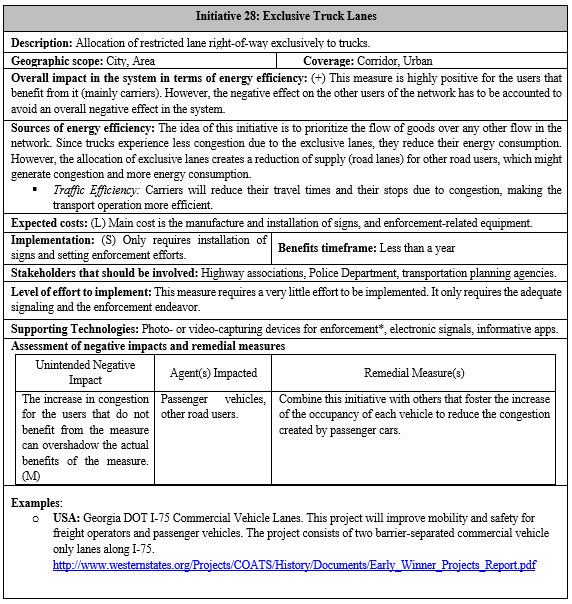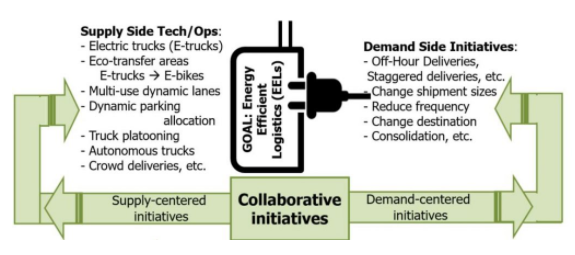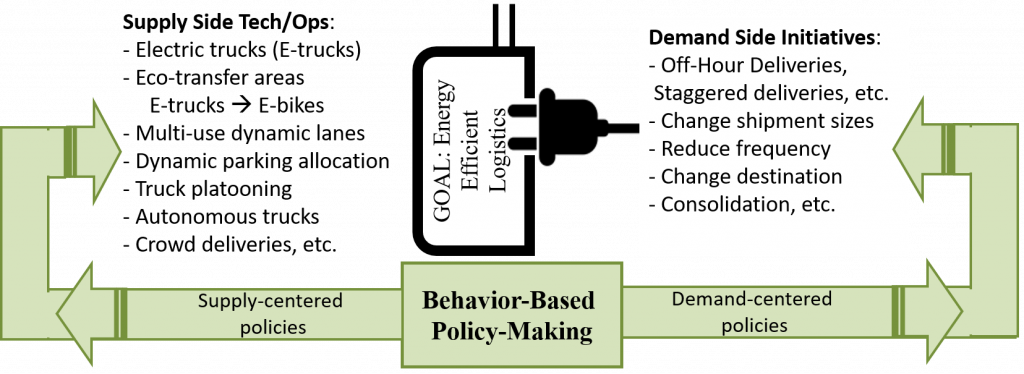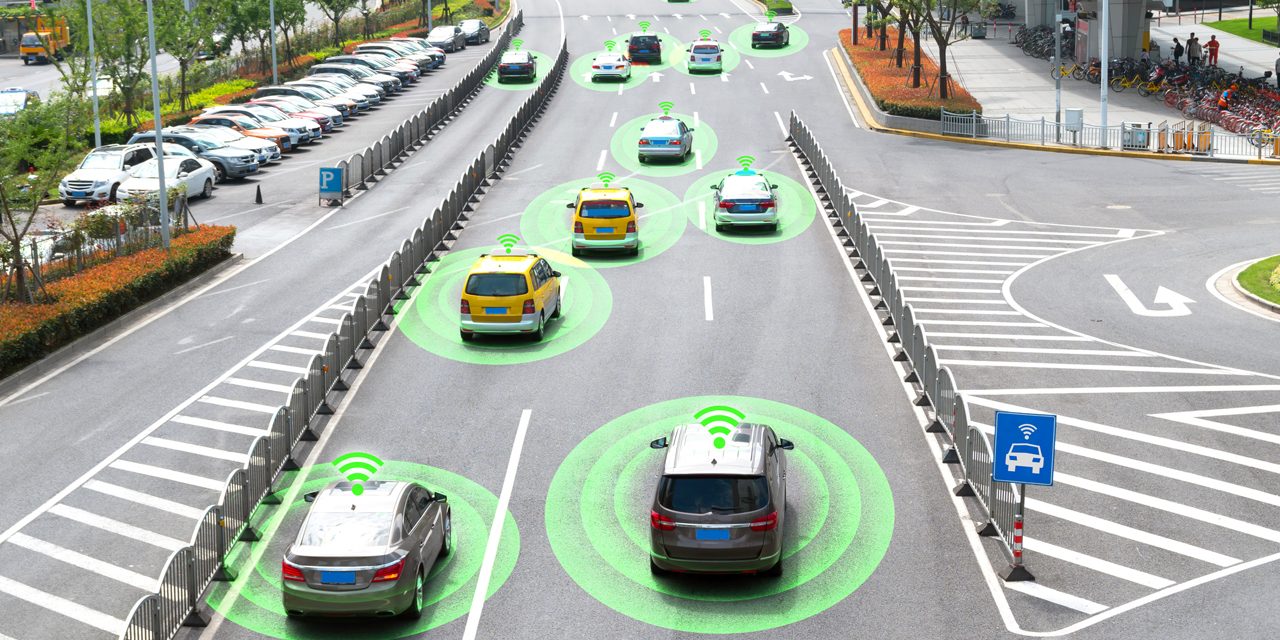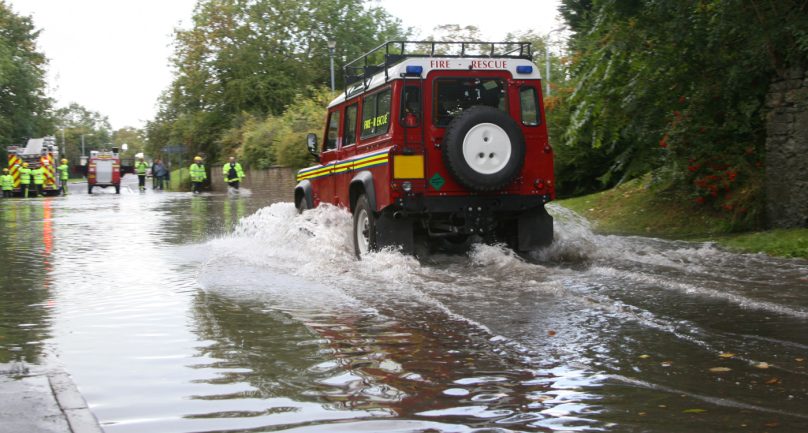A key outcome of this project is to propose initiatives that have the highest potential at fostering Energy Efficient Logistics (EEL). In this sense, “initiatives” refer to projects, programs, regulations, policies, or other mechanisms that can help to achieve this goal. The purpose of the Catalog of EEL Initiatives is to characterize a wide spectrum of initiatives that can enhance freight energy efficiency. The catalog works as a state-of-the-art inventory of sustainable freight initiatives. The 52 initiatives presented in the catalog are based on the characterization of the supply chain going from supply-related to demand-related initiatives.
The initiatives can be classified into seven major categories with supply initiatives at one end and demand related/land use management related at the other. The seven groups of initiatives are:
Infrastructure management
Parking/loading areas management
Vehicle-related strategies
Traffic management
Pricing, incentives, and taxation
Logistical management
Freight demand/ land use management
To qualitatively assess the degree to which the various initiatives could foster EELs, the team identified the various ways in which the initiatives could increase energy efficiency and created an energy efficiency framework tailored for freight transportation (Figure 1). The existing energy efficiency frameworks in the literature were developed for person-travel decisions and are not necessarily aligned with the decisions made in logistics. For instance, mode and travel (routing) are decisions made separately from the decision of mode choice.
Thus, the team proposes a framework that considers the following components of efficiency:
Vehicle efficiency
Travel efficiency (routing, driving and traffic)
Mode efficiency
Demand/land use efficiency
Network level efficiency
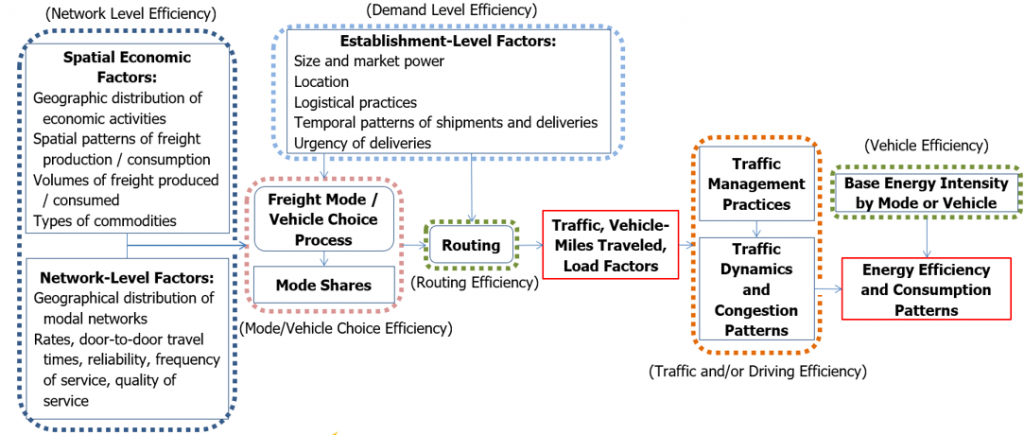
To facilitate the analyses of various initiatives, one-page summaries were created for each of the 52 initiatives included in the catalog. The one-pagers describe the attributes of the initiatives in terms of their potential contributions to EEL, and the factors that ought to be taken into account to assess feasibility for implementation. Figure 2 shows an example of one of the one-pagers.
